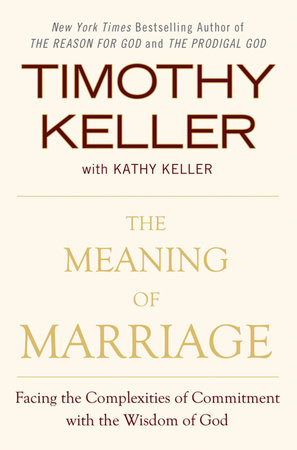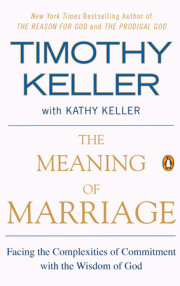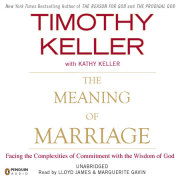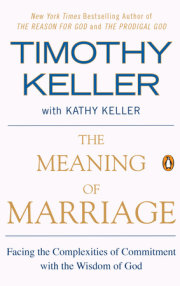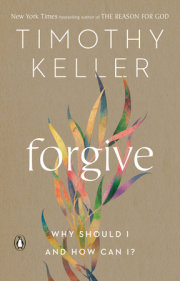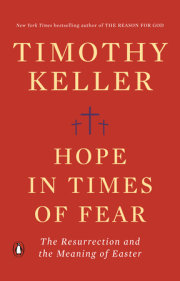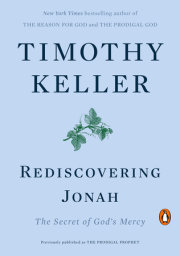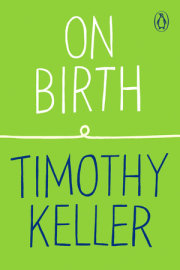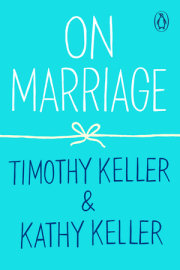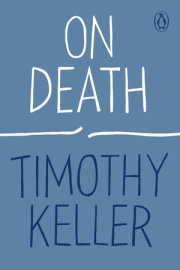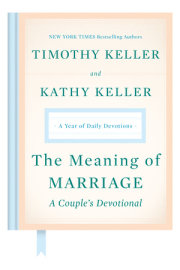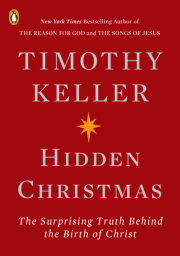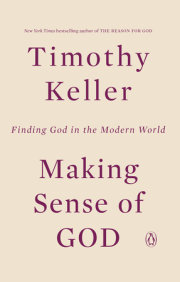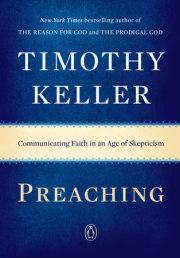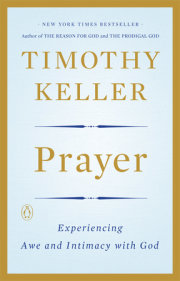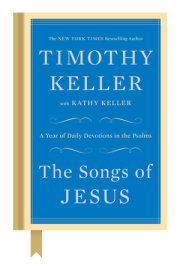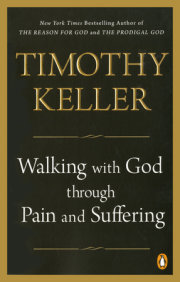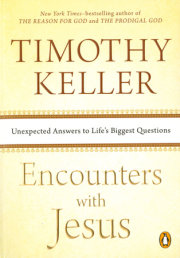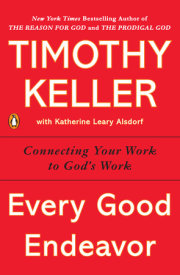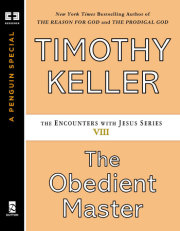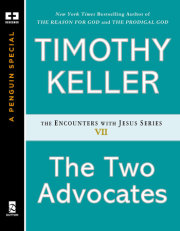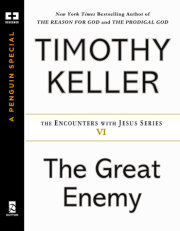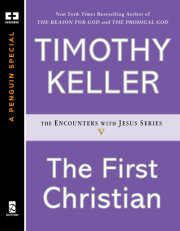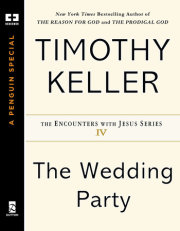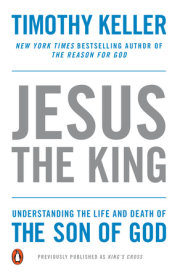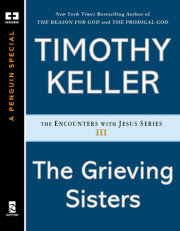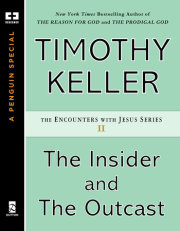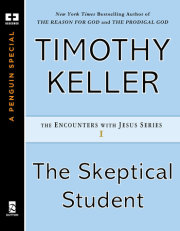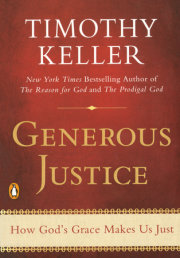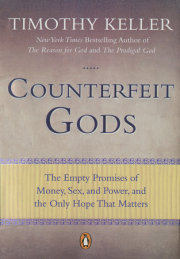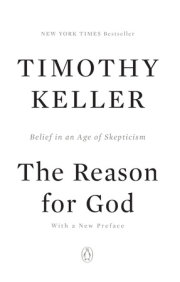God, the best maker of all marriages,
Combine your hearts in one.
—William Shakespeare, Henry V
A Book for Married People
Think of this book as a tree supplied by three deep roots. The first is my thirty-seven-year marriage to my wife, Kathy.1 She helped me write this book, and she herself wrote chapter 6, Embracing the Other. In chapter 1, I caution readers about the way contemporary culture defines “soul mate” as “a perfectly compatible match.” Nevertheless, when we first began to spend time with each other, we each realized that the other was a rare fit for our hearts. I first met Kathy through her sister, Susan, who was a student with me at Bucknell University. Susan often spoke to Kathy about me and to me about Kathy. As a young girl, Kathy had been led toward the Christian faith by C. S. Lewis’s The Chronicles of Narnia.2 She urged Susan to recommend them to me. I read and was moved by the books and by other Lewis volumes that I subsequently studied. In 1972, we both enrolled at the same school, Gordon-Conwell Theological Seminary on Boston’s North Shore, and there we quickly came to see that we shared the “secret thread” that Lewis says is the thing that turns people into close friends—or more.
You may have noticed that the books you really love are bound together by a secret thread. You know very well what is the common quality that makes you love them, though you cannot put it into words:. . . . Are not all lifelong friendships born at the moment when at last you meet another human being who has some inkling . . . of that something which you were born desiring . . . ?3
Our friendship grew into romance and engagement, and then from a fragile new marriage into a tested and durable one. But this only happened through the “pearls before swine” speech, the Great Dirty Diaper Conflict, the “smashing the wedding china” affair, and other infamous events in our family history that will be described in this book—all mileposts on the very bumpy road to marital joy. Like most young modern couples, we found that marriage was much harder than we expected it to be. At the conclusion of our wedding ceremony, we marched out singing to the hymn “How Firm a Foundation.” Little did we know how relevant some of the lines would be to the arduous and painful work of developing a strong marriage.
When through fiery trials, thy pathway shall lie,
My grace all-sufficient will be thy supply.
For I will be with thee, thy troubles to bless
And sanctify to thee thy deepest distress.4
This book, therefore, is for those spouses who have discovered how challenging day-to-day marriage is and who are searching for practical resources to survive the sometimes overwhelming “fiery trials” of matrimony and to grow through them. Our society’s experience with marriage has given us the metaphor “the honeymoon is over.” This is a book for those who have experienced this as a literal truth and may have fallen back to earth with a thud.
A Book for Unmarried People
The second source for this book is a long pastoral ministry in a city with millions (and a church with thousands) of single adults. Our congregation, Redeemer Presbyterian Church in Manhattan, is a rarity—a very large church that has been for years composed predominantly of singles. Several years ago, when we had about four thousand people in attendance, I asked a very prominent church consultant, “How many churches do you know of our size with three thousand singles?” He answered, “Your church is unique, as far as I know.”
Ministering in the center of New York City in the late 1980s, Kathy and I were constantly struck by the deep ambivalence with which Western culture views marriage. It was then we began to hear all the now society-wide objections—marriage was originally about property and is now in flux, marriage crushes individual identity and has been oppressive for women, marriage stifles passion and is ill-fitted to psychological reality, marriage is “just a piece of paper” that only serves to complicate love, and so on. But beneath these philosophical objections lies a snarl of conflicted personal emotions, born out of many negative experiences with marriage and family life.
Early in our New York City ministry, in the fall of 1991, I preached a nine-week series on marriage. It has since been the most listened-to set of sermons or talks the church has ever produced. I had to begin the series by giving some justification for devoting weeks of teaching on being married to a congregation of mainly unmarried people. My main rationale was that single people today need a brutally realistic yet glorious vision of what marriage is and can be. What I said then fits single readers today, and this book is for them, too.
In preparation for writing this, I read a host of Christian books on marriage. Most of them were written to help married couples work through specific problems. This volume will be useful for that as well, but its primary goal is to give both married and unmarried people a vision for what marriage is according to the Bible. That will help married people correct mistaken views that might be harming their marriage, and it will help single people stop destructively over-desiring marriage or destructively dismissing marriage altogether. Also, a Bible-based marriage book will help each reader have a better idea of who he or she should consider as a prospective mate.
A Book about the Bible
There is a third source for the material in this book, and it is the most foundational. Though this book is rooted in my personal experience of marriage and ministry, it is even more grounded in the teachings of the Old and New Testaments. Nearly four decades ago, as theological students, Kathy and I studied the Biblical teachings on sex, gender, and marriage. Over the next fifteen years, we worked them out in our own marriage. Then, over the last twenty-two years, we have used what we learned from both Scripture and experience to guide, encourage, counsel, and instruct young urban adults with regard to sex and marriage. We offer the fruit of these three influences to you in this book.
But the foundation of it all is the Bible.
In the Bible there are three human institutions that stand apart from all others—the family, the church, and the state. There’s nothing in the Bible about how schools should be run, even though they are crucial to a flourishing society. There’s nothing there about business corporations or museums or hospitals. In fact, there are all sorts of great institutions and human enterprises that the Bible doesn’t address or regulate. And so we are free to invent them and operate them in line with the general principles for human life that the Bible gives us.
But marriage is different. As the Presbyterian Book of Common Worship says, God “established marriage for the welfare and happiness of humankind.” Marriage did not evolve in the late Bronze Age as a way to determine property rights. At the climax of the Genesis account of creation we see God bringing a woman and a man together to unite them in marriage. The Bible begins with a wedding (of Adam and Eve) and ends in the book of Revelation with a wedding (of Christ and the church). Marriage is God’s idea. It is certainly also a human institution, and it reflects the character of the particular human culture in which it is embedded. But the concept and roots of human marriage are in God’s own action, and therefore what the Bible says about God’s design for marriage is crucial.
That is why the Presbyterian service of marriage says that marriage is “instituted by God, regulated by his commandments, blessed by our Lord Jesus Christ.” What God institutes he also regulates. If God invented marriage, then those who enter it should make every effort to understand and submit to his purposes for it. We do this in many other aspects of our lives. Think of buying a car: If you purchase a vehicle, a machine well beyond your own ability to create, you will certainly take up the owner’s manual and abide by what the designer says the car needs by way of treatment and maintenance. To ignore it would be to court disaster.
Plenty of people who do not acknowledge God or the Bible, yet who are experiencing happy marriages, are largely abiding by God’s intentions, whether they realize it or not. But it is far better if we are conscious of those intentions. And the place to discover them is in the writings of the Scripture.
What if you want to read this book and you don’t share the assumption that the Bible is the authoritative revelation from God? Maybe you appreciate the Bible in some regards, but you don’t trust it on the subjects of sex, love, and marriage. These topics of ancient wisdom are at great variance with contemporary Western sensibilities, and therefore the Bible has a reputation for being “regressive” on those subjects. We would urge you give this book a try anyway. Over the years both Kathy and I have taught at length on marriage, and I have spoken on marriage at innumerable weddings. There we’ve learned that most people who do not share our view of the Bible or even our Christian faith are often shocked by how penetrating the Biblical perspective on marriage is and how relevant it is to their own situations. So often people have told me after the ceremony, “I’m not religious at all, but that was the most helpful and practical explanation of marriage I’ve ever heard.”
It is hard to get a good perspective on marriage. We all see it through the inevitably distorted lenses of our own experience. If you came from an unusually stable home, where your parents had a great marriage, that may have “made it look easy” to you, and so when you get to your own marriage you may be shocked by how much it takes to forge a lasting relationship. On the other hand, if you have experienced a bad marriage or a divorce, either as a child or an adult, your view of marriage may be overly wary and pessimistic. You may be too expectant of relationship problems and, when they appear, be too ready to say, “Yup, here it goes,” and to give up. In other words, any kind of background experience of marriage may make you ill equipped for it yourself.
So where can you go for a comprehensive view of marriage? There are many good “how-to” volumes usually written by counselors that can be very helpful. In a few years, however, marriage manuals look dated. In the Bible you have teaching that has been tested by millions of people over centuries and in multiple cultures. Do we have any other resource on marriage like that?
The Plan of the Book
The substance of this book draws on St. Paul’s great passage on marriage in Ephesians 5, not only because it is so rich and full in itself, but also because it connects and expounds on the other most important Biblical text on marriage, Genesis 2. In chapter 1, we put Paul’s discussion into today’s cultural context and lay out two of the most basic teachings by the Bible on marriage—that it has been instituted by God and that marriage was designed to be a reflection of the saving love of God for us in Jesus Christ. That is why the gospel helps us to understand marriage and marriage helps us to understand the gospel. In chapter 2, we present Paul’s thesis that all married partners need the work of the Holy Spirit in their lives. The work of the Spirit makes Christ’s saving work real to our hearts, giving us supernatural help against the main enemy of marriage: sinful self-centeredness. We need the fullness of the Spirit if we are to serve one another as we should.
Chapter 3 gets us into the heart of what marriage is all about—namely, love. But what is love? This chapter discusses the relationship of feelings of love to acts of love and the relationship of romantic passion to covenantal commitment. Chapter 4 addresses the question of what marriage is for: It is a way for two spiritual friends to help each other on their journey to become the persons God designed them to be. Here we will see that a new and deeper kind of happiness is found on the far side of holiness. Chapter 5 lays out three basic skill sets with which we can help each other on that journey.
Chapter 6 discusses the Christian teaching that marriage is a place where the two sexes accept each other as differently gendered and learn and grow through it. Chapter 7 helps single people use the material in this book to live the single life well and to think wisely about seeking marriage themselves. Finally, chapter 8 takes on the subject of sex, why the Bible confines it to marriage, and how, if we embrace the Biblical view, it will play out in both the single life and in marriage.5
In this book we examine the Christian understanding of marriage. It is based, as we have said, on a straightforward reading of Biblical texts. This means we are defining marriage as a lifelong, monogamous relationship between a man and a woman. According to the Bible, God devised marriage to reflect his saving love for us in Christ, to refine our character, to create stable human community for the birth and nurture of children, and to accomplish all this by bringing the complementary sexes into an enduring whole-life union. It needs to be said, therefore, that this Christian vision for marriage is not something that can be realized by two people of the same sex. That is the unanimous view of the Biblical authors, and therefore that is the view that we assume throughout the rest of this book, even though we don’t directly address the subject of homosexuality.
The Bible’s teaching on marriage does not merely reflect the perspective of any one culture or time. The teachings of Scripture challenge our contemporary Western culture’s narrative of individual freedom as the only way to be happy. At the same time, it critiques how traditional cultures perceive the unmarried adult to be less than a fully formed human being. The book of Genesis radically critiques the institution of polygamy, even though it was the accepted cultural practice of the time, by vividly depicting the misery and havoc it plays in family relationships, and the pain it caused, especially for women. The New Testament writers, in a way that startled the pagan world, lifted up long-term singleness as a legitimate way to live.6 In other words, the Biblical authors’ teaching constantly challenged their own cultures’ beliefs—they were not simply a product of ancient mores and practices. We cannot, therefore, write off the Biblical view of marriage as one-dimensionally regressive or culturally obsolete. On the contrary, it is bristling with both practical, realistic insights and breathtaking promises about marriage. And they come not only in well-stated propositions but also through brilliant stories and moving poetry.7 Unless you’re able to look at marriage through the lens of Scripture instead of through your own fears or romanticism, through your particular experience, or through your culture’s narrow perspectives, you won’t be able to make intelligent decisions about your own marital future.
Ephesians 5:18–33
(New International Version—1984)
18 Do not get drunk on wine, which leads to debauchery. Instead, be filled with the Spirit.19 Speak to one another with psalms, hymns and spiritual songs. Sing and make music in your heart to the Lord,20 always giving thanks to God the Father for everything, in the name of our Lord Jesus Christ.21 Submit to one another out of reverence for Christ.
22 Wives, submit to your husbands as to the Lord.23 For the husband is the head of the wife as Christ is the head of the church, his body, of which he is the Savior.24 Now as the church submits to Christ, so also wives should submit to their husbands in everything.
25 Husbands, love your wives, just as Christ loved the church and gave himself up for her26 to make her holy, cleansing her by the washing with water through the word,27 and to present her to himself as a radiant church, without stain or wrinkle or any other blemish, but holy and blameless.28 In this same way, husbands ought to love their wives as their own bodies. He who loves his wife loves himself.29 After all, no one ever hated his own body, but he feeds and cares for it, just as Christ does the church30—for we are members of his body.31 “For this reason a man will leave his father and mother and be united to his wife, and the two will become one flesh.”32 This is a profound mystery—but I am talking about Christ and the church.33 However, each one of you also must love his wife as he loves himself, and the wife must respect her husband.
A man shall leave his father and mother and be united to his wife, and the two will become one flesh. This is a profound mystery. . . .
Ephesians 5:31–32
I’m tired of listening to sentimental talks on marriage. At weddings, in church, and in Sunday school, much of what I’ve heard on the subject has as much depth as a Hallmark card. While marriage is many things, it is anything but sentimental. Marriage is glorious but hard. It’s a burning joy and strength, and yet it is also blood, sweat, and tears, humbling defeats and exhausting victories. No marriage I know more than a few weeks old could be described as a fairy tale come true. Therefore, it is not surprising that the only phrase in Paul’s famous discourse on marriage in Ephesians 5 that many couples can relate to is verse 32, printed above. Sometimes you fall into bed, after a long, hard day of trying to understand each other, and you can only sigh: “This is all a profound mystery!” At times, your marriage seems to be an unsolvable puzzle, a maze in which you feel lost.
I believe all this, and yet there’s no relationship between human beings that is greater or more important than marriage. In the Bible’s account, God himself officiates at the first wedding (Genesis 2:22–25). And when the man sees the woman, he breaks into poetry and exclaims, “At last!”1 Everything in the text proclaims that marriage, next to our relationship to God, is the most profound relationship there is. And that is why, like knowing God himself, coming to know and love your spouse is difficult and painful yet rewarding and wondrous.
The most painful, the most wonderful—this is the Biblical understanding of marriage, and there has never been a more important time to lift it up and give it prominence in our culture.
The Decline of Marriage
Over the last forty years, the “leading marriage indicators”—empirical descriptions of marriage health and satisfaction in the United States—have been in steady decline.2 The divorce rate is nearly twice the rate it was in 1960.3 In 1970, 89 percent of all births were to married parents, but today only 60 percent are.4 Most tellingly, over 72 percent of American adults were married in 1960, but only 50 percent were in 2008.5
All of this shows an increasing wariness and pessimism about marriage in our culture, and this is especially true of younger adults. They believe their chances of having a good marriage are not great, and, even if a marriage is stable, there is in their view the horrifying prospect that it will become sexually boring. As comedian Chris Rock has asked, “Do you want to be single and lonely or married and bored?” Many young adults believe that these are indeed the two main options. That is why many aim for something in the middle between marriage and mere sexual encounters—cohabitation with a sexual partner.
This practice has grown exponentially in the last three decades. Today more than half of all people live together before getting married. In 1960, virtually no one did.6 One quarter of all unmarried women between the ages of twenty-five and thirty-nine are currently living with a partner, and by their late thirties over 60 percent will have done so.7 Driving this practice are several widespread beliefs. One is the assumption that most marriages are unhappy. After all, the reasoning goes, 50 percent of all marriages end in divorce, and surely many of the other 50 percent must be miserable. Living together before marriage, many argue, improves your chances of making a good marriage choice. It helps you discover whether you are compatible before you take the plunge. It’s a way to discover if the other person can really keep your interest, if the “chemistry” is strong enough. “Everyone I know who’s gotten married quickly—and failed to live together [first]—has gotten divorced,” said one man in a Gallup survey for the National Marriage Project.8
The problem with these beliefs and assumptions, however, is that every one of them is almost completely wrong.
The Surprising Goodness of Marriage
Despite the claim of the young man in the Gallup survey, “a substantial body of evidence indicates that those who live together before marriage are more likely to break up after marriage.”9 Cohabitation is an understandable response from those who experienced their own parents’ painful divorces, but the facts indicate that the cure may be worse than the alleged disease.10
Other common assumptions are wrong as well. While it is true that some 45 percent of marriages end in divorce, by far the greatest percentage of divorces happen to those who marry before the age of eighteen, who have dropped out of high school, and who have had a baby together before marrying. “So if you are a reasonably well-educated person with a decent income, come from an intact family and are religious, and marry after twenty-five without having a baby first, your chances of divorce are low indeed.”11
Many young adults argue for cohabitation because they feel they should own a home and be financially secure before they marry.12 The assumption is that marriage is a financial drain. But studies point to what have been called “The Surprising Economic Benefits of Marriage.”13 A 1992 study of retirement data shows that individuals who were continuously married had 75 percent more wealth at retirement than those who never married or who divorced and did not remarry. Even more remarkably, married men have been shown to earn 10–40 percent more than do single men with similar education and job histories.
Why would this be? Some of this is because married people experience greater physical and mental health. Also, marriage provides a profound “shock absorber” that helps you navigate disappointments, illnesses, and other difficulties. You recover your equilibrium faster. But the increased earnings probably also come from what scholars call “marital social norms.” Studies show that spouses hold one another to greater levels of personal responsibility and self-discipline than friends or other family members can. Just to give one example, single people can spend money unwisely and self-indulgently without anyone to hold them accountable. But married people make each other practice saving, investment, and delayed gratification. Nothing can mature character like marriage.14
Perhaps the main reason that young adults are wary of marriage is their perception that most couples are unhappy in their marriages. Typical is a Yahoo! Forum in which a twenty-four-year-old male announced his decision to never marry. He reported that as he had shared his decision over the past few months to his married friends, everyone laughed and acted jealous. They all said to him that he was smart. He concluded that at least 70 percent of married people must be unhappy in their relationships. A young woman in a response to his post agreed with his anecdotal evidence. That fit her own assessment of her married friends. “Out of 10 married couples . . . 7 are miserable as hell,” she opined, and added, “I’m getting married next year because I love my fiancé. However, if things change, I won’t hesitate to divorce him.”15
Recently the New York Times Magazine ran an article about a new movie called Monogamy by Dana Adam Shapiro.16 In 2008, Shapiro came to realize that many of his married thirty-something friends were breaking up. In preparation for making a film about it, he decided to do an oral history of breaking up—collecting fifty in-depth interviews with people who had seen their marriages dissolve. He did no research, however, on happy, long-term marriages. When asked why he did not do that, he paraphrased Tolstoy: “All happy couples are the same. Which is to say they’re just boring.”17 “So it will not be surprising,” the Times reporter concluded, “to say that the film, in the end, takes a grim, if not entirely apocalyptic, view of relationships.” The movie depicts two people who love each other very much but who simply “can’t make it work.” In other interviews about the movie, the filmmaker expresses his belief that it is extraordinarily hard though not completely impossible for two modern persons to love each other without stifling one another’s individuality and freedom. In the reporter’s words, the never-married Shapiro, though he hopes to be married someday and does not believe his film is anti-marriage, finds an “intractable difficulty” with monogamy. In this he reflects the typical view of young adults, especially in the more urban areas of the United States.
As the pastor of a church containing several thousand single people in Manhattan, I have talked to countless men and women who have the same negative perceptions about marriage. However, they underestimate the prospects for a good marriage. All surveys tell us that the number of married people who say they are “very happy” in their marriages is high—about 61–62 percent—and there has been little decrease in this figure during the last decade. Most striking of all, longitudinal studies demonstrate that two-thirds of those unhappy marriages out there will become happy within five years if people stay married and do not get divorced.18 This led University of Chicago sociologist Linda J. Waite to say, “the benefits of divorce have been oversold.”19
During the last two decades, the great preponderance of research evidence shows that people who are married consistently show much higher degrees of satisfaction with their lives than those who are single, divorced, or living with a partner.20 It also reveals that most people are happy in their marriages, and most of those who are not and who don’t get divorced eventually become happy. Also, children who grow up in married, two-parent families have two to three times more positive life outcomes than those who do not.21 The overwhelming verdict, then, is that being married and growing up with parents who are married are enormous boosts to our well-being.
The History of Marriage
Belief in the desirability and goodness of marriage was once universal, but that is no longer true. A recent report by the University of Virginia’s National Marriage Project concluded the following: “Less than a third of the [high school senior] girls and only slightly more than a third of the boys seem to believe . . . that marriage is more beneficial to individuals than the alternatives. Yet this negative attitude is contrary to the available empirical evidence, which consistently indicates the substantial personal as well as social benefits of being married compared to staying single or just living with someone.”22 The report argues that the views of most young adults not only are unsupported by the older consensus, and against the teaching of all the major religions of the world, but they are also unsupported by the accumulated evidence of the most recent social science.
So where did this pessimism come from, and why is it so out of touch with reality? Paradoxically, it may be that the pessimism comes from a new kind of unrealistic idealism about marriage, born of a significant shift in our culture’s understanding of the purpose of marriage. Legal scholar John Witte, Jr., says that the earlier “ideal of marriage as a permanent contractual union designed for the sake of mutual love, procreation, and protection is slowly giving way to a new reality of marriage as a ‘terminal sexual contract’ designed for the gratification of the individual parties.”23
Witte points out that in Western civilizations there have been several competing views of what the “form and function” of marriage should be.24 The first two were the Catholic and the Protestant perspectives. Though different in many particulars, they both taught that the purpose of marriage was to create a framework for lifelong devotion and love between a husband and a wife. It was a solemn bond, designed to help each party subordinate individual impulses and interests in favor of the relationship, to be a sacrament of God’s love (the Catholic emphasis) and serve the common good (the Protestant emphasis). Protestants understood marriage to be given by God not merely to Christians but to benefit the entirety of humanity. Marriage created character by bringing male and female into a binding partnership. In particular, lifelong marriage was seen as creating the only kind of social stability in which children could grow and thrive. The reason that society had a vested interest in the institution of marriage was because children could not flourish as well in any other kind of environment.25
However, Witte explains that a new view of marriage emerged from the eighteenth- and nineteenth-century Enlightenment. Older cultures taught their members to find meaning in duty, by embracing their assigned social roles and carrying them out faithfully. During the Enlightenment, things began to shift. The meaning of life came to be seen as the fruit of the freedom of the individual to choose the life that most fulfills him or her personally. Instead of finding meaning through self-denial, through giving up one’s freedoms, and binding oneself to the duties of marriage and family, marriage was redefined as finding emotional and sexual fulfillment and self-actualization.
Proponents of this new approach did not see the essence of marriage as located in either its divine sacramental symbolism or as a social bond given to benefit the broader human commonwealth. Rather, marriage was seen as a contract between two parties for mutual individual growth and satisfaction. In this view, married persons married for themselves, not to fulfill responsibilities to God or society. Parties should, therefore, be allowed to conduct their marriage in any way they deemed beneficial to them, and no obligation to church, tradition, or broader community should be imposed on them. In short, the Enlightenment privatized marriage, taking it out of the public sphere, and redefined its purpose as individual gratification, not any “broader good” such as reflecting God’s nature, producing character, or raising children. Slowly but surely, this newer understanding of the meaning of marriage has displaced the older ones in Western culture.
This change has been a very self-conscious one. Recently, New York Times columnist Tara Parker-Pope wrote an article entitled “The Happy Marriage Is the ‘Me’ Marriage”:
The notion that the best marriages are those that bring satisfaction to the individual may seem counterintuitive. After all, isn’t marriage supposed to be about putting the relationship first? Not anymore. For centuries, marriage was viewed as an economic and social institution, and the emotional and intellectual needs of the spouses were secondary to the survival of the marriage itself. But in modern relationships, people are looking for a partnership, and they want partners who make their lives more interesting . . . [who] help each of them attain valued goals.26
This change has been revolutionary, and Parker-Pope lays it out unashamedly. Marriage used to be a public institution for the common good, and now it is a private arrangement for the satisfaction of the individuals. Marriage used to be about us, but now it is about me.
But ironically, this newer view of marriage actually puts a crushing burden of expectation on marriage and on spouses in a way that more traditional understandings never did. And it leaves us desperately trapped between both unrealistic longings for and terrible fears about marriage.
The Search for a Compatible “Soul Mate”
A clear picture of this expectation can be found in a significant study from 2002 by the National Marriage Project entitled “Why Men Won’t Commit,” by Barbara Dafoe Whitehead and David Popenoe.27 Men are often accused by women of being “commitment-phobic,” afraid of marriage. The authors of the report respond that, indeed, “Our investigation of male attitudes indicates there is evidence to support this popular view.” They go on to list the reasons that men give for why they would rather not get married, or at least not soon. Most striking, however, is how many men said they wouldn’t marry until they found the “perfect soul mate,” someone very “compatible.” But what does that mean?
When I met my future wife, Kathy, we sensed very quickly that we shared an unusual number of books, stories, themes, ways of thinking about life, and experiences that brought us joy. We recognized in one another a true “kindred spirit” and the potential for a bond of deep friendship. But this is not what many young adults mean when they speak of a compatible soul mate. According to Whitehead and Popenoe, there were two key factors.
The first is physical attractiveness and sexual chemistry. One of the most obvious themes in Shapiro’s interviews with recently divorced people was how crucial it was that they had great sex. One woman explained that she had married her husband because “I thought he was hot.” But to her distress, he put on weight and stopped caring about his appearance. The honeymoon was over. And the main way she knew was sex. She made it a rule not to have sex unless she really wanted to, but she seldom wanted to: “We had settled into a routine where we only had sex once a week or so, maybe even less. There was no variety, and no real mental or emotional rewards. There was none of the urgency or tension that makes sex so great—that sense of wanting to impress or entice someone. . . .”28
In her view, sexual attraction and chemistry were foundational requirements to finding someone compatible.
However, sexual attractiveness was not the number one factor that men named when surveyed by the National Marriage Project. They said that “compatibility” above all meant someone who showed a “willingness to take them as they are and not change them.”29 “More than a few of the men expressed resentment at women who try to change them. . . . Some of the men describe marital compatibility as finding a woman who will ‘fit into their life.’ ‘If you are truly compatible, then you don’t have to change,’ one man commented.”30
Making Men Truly Masculine
This is a significant break with the past. Traditionally, men married knowing it would mean a great deal of personal alteration. Part of the traditional understanding of marriage was that it “civilized” men. Men have been perceived as being more independent and less willing and able than women to enter into relationships that require mutual communication, support, and teamwork. So one of the classic purposes of marriage was very definitely to “change” men and be a “school” in which they learned how to conduct new, more interdependent relationships.
The men in the study revealed these very attitudes that marriage was supposed to correct in the past. The researchers asked the men they were interviewing if they realized that women their age face pressures to marry and bear children before they were biologically unable. The men knew full well that their postponement of marriage made it more difficult for peer women to achieve their life goals—but they were unsympathetic. As one put it, “That’s their issue.”31 Many of the males in the research were adamant that their relationship with a woman should not curtail their freedom at all. The report concluded, “Cohabitation gives men regular access to the domestic and sexual ministrations of a girlfriend while allowing them . . . to lead a more independent life and continue to look around for a better partner.”32
In a New York Times op-ed piece, Sara Lipton drew up a list of prominent married political men who had refused to let marriage confine them sexually to their spouses: Arnold Schwarzenegger, Dominique Strauss-Kahn, Mark Sanford, John Ensign, John Edwards, Eliot Spitzer, Newt Gingrich, Bill Clinton, and Anthony Weiner. In every case, they had resisted the traditional purposes of marriage: to change their natural instincts, to reign in passions, to learn denial of one’s own desires, and to serve others.
The conventional explanation for this is that marriage simply doesn’t fit the male nature. In particular, it is said, the most masculine of men do not do well in marriage. It is argued that “a need for sexual conquest, female adulation, and illicit and risky liaisons seems to go along with drive, ambition, and confidence in the ‘alpha male.’” But Lipton argued that marriage was traditionally a place where males became truly masculine: “For most of Western history, the primary and most valued characteristic of manhood was self-mastery. . . . A man who indulged in excessive eating, drinking, sleeping or sex—who failed to ‘rule himself’—was considered unfit to rule his household, much less a polity. . . .”
Lipton, a professor of history at SUNY Stony Brook, concluded, “In the face of recent revelations about the reckless and self-indulgent sexual conduct of so many of our elected officials, it may be worth recalling that sexual restraint rather than sexual prowess was once the measure of a man.”33
It would be wrong to lay on men the full responsibility for the shift in marriage attitudes. Both men and women today want a marriage in which they can receive emotional and sexual satisfaction from someone who will simply let them “be themselves.” They want a spouse who is fun, intellectually stimulating, sexually attractive, with many common interests, and who, on top of it all, is supportive of their personal goals and of the way they are living now.
And if your desire is for a spouse who will not demand a lot of change from you, then you are also looking for a spouse who is almost completely pulled together, someone very “low maintenance” without much in the way of personal problems. You are looking for someone who will not require or demand significant change. You are searching, therefore, for an ideal person—happy, healthy, interesting, content with life. Never before in history has there been a society filled with people so idealistic in what they are seeking in a spouse.
The Irony of Pessimistic Idealism
It seems almost oxymoronic to believe that this new idealism has led to a new pessimism about marriage, but that is exactly what has happened. In generations past there was far less talk about “compatibility” and finding the ideal soul mate. Today we are looking for someone who accepts us as we are and fulfills our desires, and this creates an unrealistic set of expectations that frustrates both the searchers and the searched for.
The search for a satisfying sexual partner is a problem all by itself. Another report by the National Marriage Project states:
A pornographic media culture may [also] contribute to unrealistic expectations of what their future soul mate should look like. Influenced by the sexy images of young women on MTV, the Internet, and on the runway in televised Victoria’s Secret specials, men may be putting off marriage to their current girlfriend in the hopes that they will eventually find a combination “soul mate/babe.”34
But it would be wrong to pin the culture’s change in attitude toward marriage fully on the male quest for physical beauty. Women have been just as affected by our consumer culture. Both men and women today see marriage not as a way of creating character and community but as a way to reach personal life goals. They are all looking for a marriage partner who will “fulfill their emotional, sexual, and spiritual desires.”35 And that creates an extreme idealism that in turn leads to deep pessimism that you will ever find the right person to marry. This is the reason so many put off marriage and look right past great prospective spouses that simply are “not good enough.”
This is ironic. Older views of marriage are considered to be traditional and oppressive, while the newer view of the “Me-Marriage” seems so liberating. And yet it is the newer view that has led to a steep decline in marriage and to an oppressive sense of hopelessness with regard to it. To conduct a Me-Marriage requires two completely well-adjusted, happy individuals, with very little in the way of emotional neediness of their own or character flaws that need a lot of work. The problem is—there is almost no one like that out there to marry! The new conception of marriage-as-self-realization has put us in a position of wanting too much out of marriage and yet not nearly enough—at the same time.
In John Tierney’s classic humor article “Picky, Picky, Picky,” he tries nobly to get us to laugh at the impossible situation our culture has put us in. He recounts many of the reasons his single friends told him they had given up on their recent relationships:
“She mispronounced ‘Goethe.’”
“How could I take him seriously after seeing ‘The Road Less Traveled’ on his bookshelf?”
“If she would just lose seven pounds.”
“Sure, he’s a partner, but it’s not a big firm. And he wears those short black socks.”
“Well, it started out great . . . beautiful face, great body, nice smile. Everything was going fine—until she turned around.” He paused ominously and shook his head. “. . . she had dirty elbows.”36
After scanning the extraordinarily unrealistic personal ads (where the kind of partners “wanted” almost never really exist), Tierney decided that young adults were increasingly afflicted with what he called the “Flaw-o-Matic.” It is “an inner voice, a little whirring device inside the brain that instantly spots a fatal flaw in any potential mate.” What is the purpose of the Flaw-o-Matic? One possibility he considers is that it is something developed by people “determined to get more than they deserve—and [to] reject anyone remotely like themselves.” But Tierney concludes that more often than not this is a device that gives us an excuse to stay alone and therefore safe. “In their hearts they know why they need the Flaw-o-Matic. . . . It’s not an easy thing to admit, especially not on Valentine’s Day, but what they’re really trying to say in those personal ads is, ‘Wanted: To Be Alone.’”
In other words, some people in our culture want too much out of a marriage partner. They do not see marriage as two flawed people coming together to create a space of stability, love, and consolation—a “haven in a heartless world,” as Christopher Lasch describes it.37 This will indeed require a woman who is “a novelist/astronaut with a background in fashion modeling”38 or the equivalent in a man. A marriage based not on self-denial but on self-fulfillment will require a low- or no-maintenance partner who meets your needs while making almost no claims on you. Simply put—today people are asking far too much in the marriage partner.
. All rights reserved. No part of this excerpt may be reproduced or reprinted without permission in writing from the publisher.

